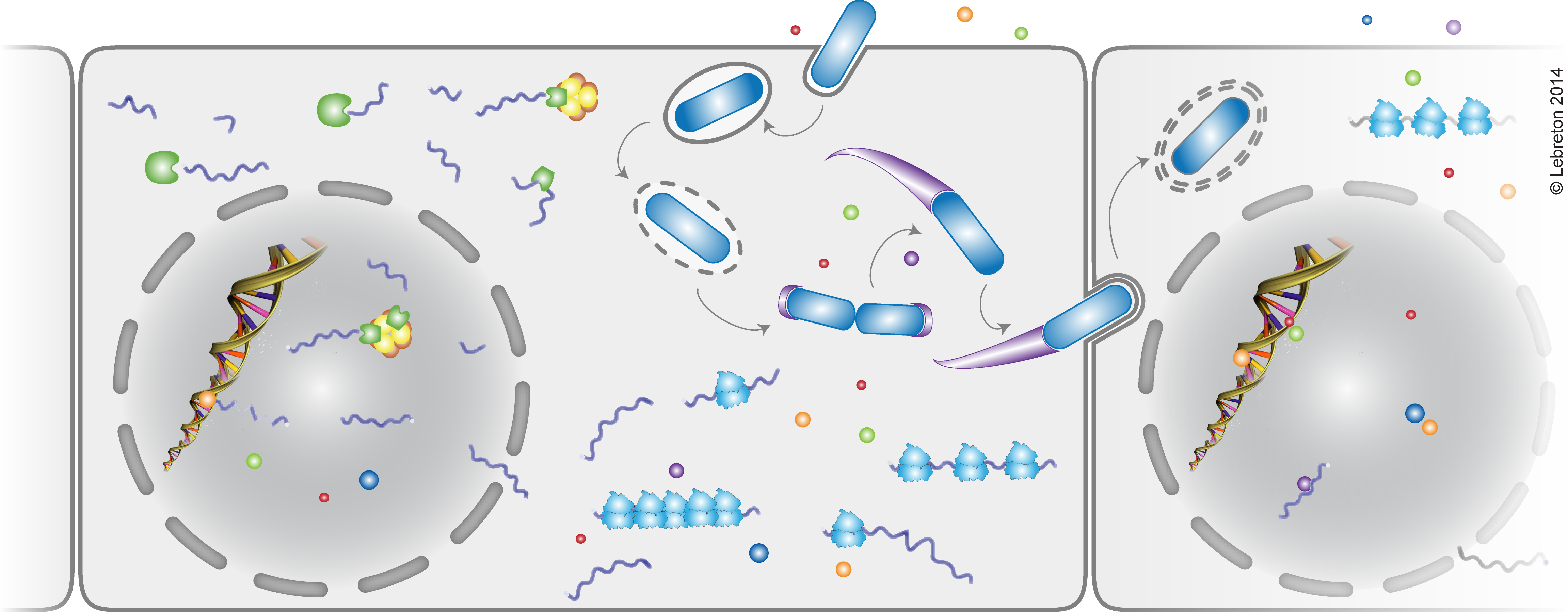|
The food-borne pathogen Listeria monocytogenes is the etiological agent of listeriosis,
an opportunistic disease with serious outcomes in the elderly, in immunocompromised individuals, foetuses
or new-borns. L. monocytogenes can cross the host intestinal, foeto-placental and blood brain barriers,
allowing its dissemination throughout the organism. This bacterium can enter and multiply in the cytosol
of most human cell types and spread to neighbouring cells, using an arsenal of virulence factors that target
diverse cellular components and subsequently hijack various host cell functions (more details here).

One major aspect of the host-bacterium dialogue during infection is the thorough remodelling of both
gene expression patterns. The combination of these bacterial and cellular activities conditions bacterial physiology,
cell survival, tissue immune response, and finally shapes the pathological outcome of the infection. In-depth
understanding of the various regulatory levels at play, and of their dynamics, is nonetheless of major importance
to apprehend how host cell functions are affected by infection.
My group at
IBENS
the post-transcriptional mechanisms affecting host gene expression during infection by
Listeria monocytogenes. WWe use this model intracellular bacterium as a tool for a proof-of-concept,
which could later on be extended to other bacterial infections.
Our projects articulate into four goals:
- What is the impact of infection on cellular RNA stability?
- Is translation affected by infection?
- What are the bacterial of host molecular mechanisms involved in these processes?
- What are the pathological consequences?
Our studies combine RNA-seq based technologies with more classical approaches in cellular
microbiology, molecular biology and biochemistry. We think they will generate a better understanding of the mutual
requirements for bacteria-host niche adaptation, lead to the characterization of new virulence factors, and allow us
to explore of eukaryotic translational control pathways in the light of infection.
We are generally open for applications from enthusiastic people willing to join our wet or dry
biology projects.
| Contact e-mail: |
 |
|